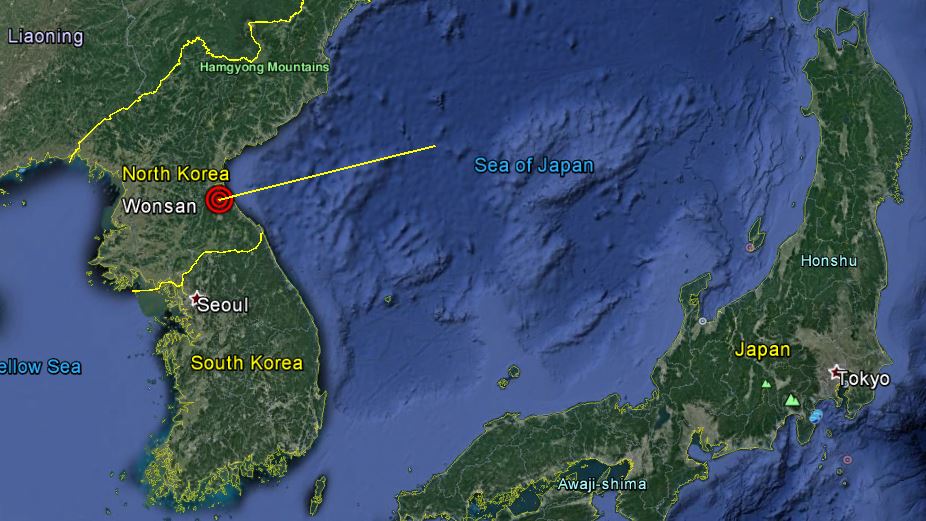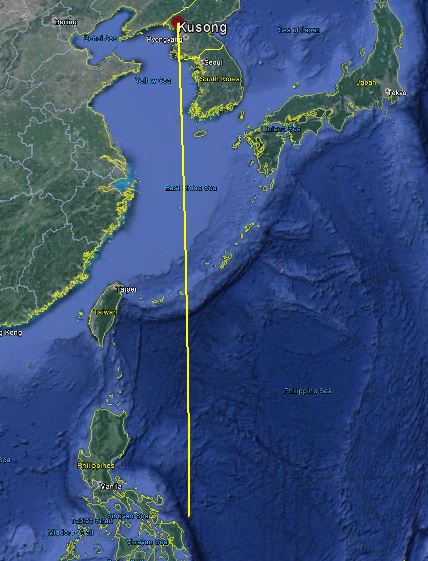Press reports are saying that North Korea is likely to try another test launch in the next few days of a new missile it is developing. But there is some controversy about which missile that may be.
Based on reports from two recent failed tests, most people assume the upcoming test will be of the intermediate-range Musudan missile, which North Korea has tested either six or eight times this year. But others see evidence that suggests it could be the mysterious long-range KN-08 missile.
What’s the evidence, and what are the implications?
The Musudan missile
This missile, called the Hwasong-10 in North Korea but Musudan in the west (after the region where it was first seen) appears to have a range of about 3,000 km. If it became operational, it would have the longest range of any system North Korea has tested as a ballistic missile (rather than as a satellite launcher).
The Musudan has a very poor test record. Starting in mid-April of this year, North Korea launched six tests from sites on its east coast (near Wonsan) into the Sea of Japan. The first five failed, all but one exploding quickly after launch. The sixth test, conducted on June 21, was successful (Fig. 1). It followed a trajectory that went much higher than normal so that it splashed down at a range of about 400 km. This nonstandard trajectory kept it from overflying Japan, which lies only about 1,000 km from the launch site. Analyzing the trajectory shows that it could reach a maximum range of 3,000 km (1,860 miles) if flown on a standard trajectory.
This maximum range is interesting since it is shorter than the 3,400 km to Guam, which is thought to be the intended target of the Musudan. It is also shorter than the 4,000 km that is frequently reported for the missile, but is consistent with my estimates of the range. That suggests North Korea has run into some design limitations that is keeping the range shorter than it would like.

Fig. 1 The flight path of the successful June 21 Musudan test, which was launched from Wonsan and traveled on a lofted trajectory to a range of 400 km. (Source: Google Earth)
The October tests
Press stories in October reported two additional tests—both of which failed—that US intelligence said were also Musudan tests. These two tests were notable since they were launched from a site on North Korea’s west coast (Kusong), unlike the previous tests.
Why switch the launch site? One obvious motivation is that from this site the missile could be launched to its full range without overflying other countries (Fig. 2). This is essentially the same flight path North Korea has used for its satellite launches. So following the successful June test on a lofted trajectory, it might make sense that North Korea would want to follow with a test on a standard trajectory. Since the Musudan is carried on a mobile launcher, switching launch sites in principle should be straightforward.

Fig. 2 The path a 3,000 km range test could follow from Kusong. (Source: Google Earth)
For these reasons, the general assumption has been that the two October tests were Musudans, and that the two failures indicate a continuing problem with the missile. Moreover, the assumption has been that the upcoming test would be another Musudan launch attempt.
The KN-08 missile
However, Jeffrey Lewis and his colleagues at the Monterey Institute raise the possibility that the two recent test failures were not of the Musudan missile, but of a longer range missile that may be in development—the KN-08, called the Hwasong-13 in North Korea.
The KN-08 has been seen in parades for several years. It has been described as a mobile long-range missile, but there remains a lot of controversy about whether such a missile is really being developed and what its capability might be if it is.
Technical analysis of the missile has shown that the design seen in parades makes more sense if North Korea were able to go beyond the Scud-level propulsion technology it has used in its previous missiles and use more advanced propellants. That more advanced technology has now been seen in the Musudan tests, which opens up the possibility that KN-08 development is real, and may have reached the point of flight testing.
Studying satellite images of the launch site for the two October tests, Jeffrey found that the burn marks on ground appeared to be larger for these tests than the previous Musudan tests at Wonsan—suggesting the launch of a larger missile. He also points out that the US military has misidentified several other missiles in recent tests, so the claim that the October tests were Musudans may not be air-tight.
While there are uncertainties that make this suggestive at best, it raises an interesting possibility that should be considered when analyzing the next launch.
Implications
As I noted above, if the two October test failures were Musudans, it would suggest serious ongoing problems with the Musudan program, despite the successful test in June. Since North Korea does not have the experience with this new propulsion technology that it does with its older Scud technology, that would not be surprising.
Even if the October tests were not Musudan failures, North Korea would still have no sense of the reliability of the missile based on previous tests. The fact that the last test worked may suggest they fixed something, but a one-in-six test record gives very little information about the chances for success of the next launch.
Conducting three quick launches (Oct. 15, 20, and the upcoming one) despite the failures is an odd way to develop a missile. Typically you would want to analyze the failures to identify and fix whatever the problem was. It may be that North Korean missiles don’t send back detailed information about their internal workings, which missiles elsewhere typically do. Without that information, North Korea’s approach would be to keep launching until it gets things to work.
It’s also possible, of course, that Pyongyang would like to make a splash during the late days of the US election campaign, thinking it would increase the visibility of a successful test. That would set a testing schedule that was not driven by a step-by-step development methodology. If that was North Korea’s motivation, it might want to launch a missile it had some reason to believe would succeed, which would suggest another Musudan test rather than a KN-08. On the other hand, if North Korea was going for maximum shock value—which a KN-08 launch would deliver—it might decide to try a Hail-Mary approach.
If this does turn out to be a KN-08 test, the two October failures suggest it is getting off to a slow start. But it would mean that a real development program is underway and that North Korea is focused on making it work.
Some details
The first four Musudan tests are believed to have been launched from the Kodo peninsula north of Wonsan, on the country’s east coast. The next two, including the successful test in June, were launched from facilities at the Wonsan Kalma Airport. The two tests in October, and the upcoming test, are from the Kusong Panghyon Airport near the west coast of the North Korea.
North Korea conducted a ground test of the Musudan engine in April, and the analysis of that test is what leads us to believe Pyongyang has shifted to more advanced propellants than used in its Nodong engines.
